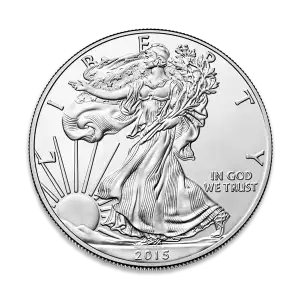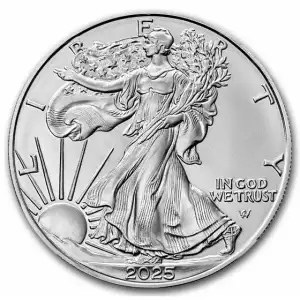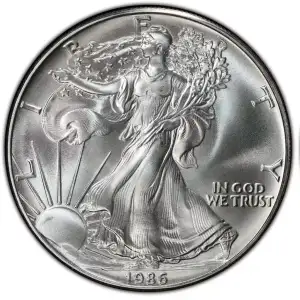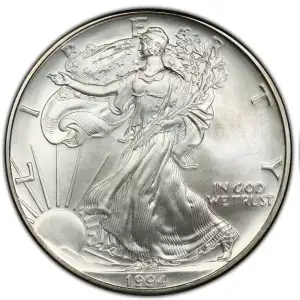By
the early twentieth century, the designs of U.S. gold coins were long
overdue for a makeover. The Liberty Head design had been employed on all
gold coins for nearly 60 years with little modification. President
Theodore Roosevelt took a personal interest in redesigning the nation’s
gold coins and commissioned famed sculptor Augustus Saint-Gaudens to
create new patterns for the $10 and $20 gold pieces, which debuted in
1907 with much fan-fare. The Saint-Gaudens $20 Gold piece or “double
eagle” is widely considered the most beautiful coin in United States
history. The obverse features a full-length portrait of Liberty with a
torch in her right hand and an olive branch in her left. She is shown in
full stride with rays of sunlight behind her and the U.S. Capitol
Building to her right. In this depiction, Liberty is an allegorical
representation of the young United States leading the world peacefully
into a new century. This is possible due to the representative democracy
of our nation, symbolized by the Capital Building in the distance.
Encircling her are 46 stars, representing each state in the Union at
that time. The reverse depicts an adult eagle in flight, representing
the power and prestige of the United States, and is in juxtaposition to
the youthful depiction of Miss Liberty. Each coin contains nearly a full
ounce of gold and is the highest denomination U.S. coin intended for
general circulation. The original 1907 coin was struck in high relief
and employed Roman numerals for the date. However, these magnificently
detailed coins proved incredibly difficult to strike and did not stack
well. After only 11,250 pieces were coined, the relief was reduced for
practical reasons, and such lower relief was employed for the remainder
of the series. The coins were minted each year from 1907 through 1916
and then again from 1920 through 1933. On April 5th, 1933, President
Franklin D. Roosevelt signed Executive Order 6102, “forbidding the
hoarding of gold coin, gold bullion, and gold certificates within the
continental United States.” The order caused all gold coin production to
cease, marking the end of a 140-year history of gold coin production in
the United States. Today, the Saint-Gaudens Double Eagle is regarded as
the centerpiece of the “Golden Age” of American Numismatics,
circulating alongside other enduring classics like the Buffalo nickel,
Mercury dime, and Walking Liberty Half dollar.






